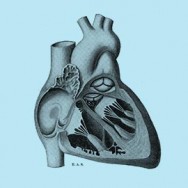
Pacemaker Implantation
Background
The heart has its own internal electrical system that controls the rate and rhythm of the heartbeat. Faulty signaling in this electrical system can cause arrhythmias. A pacemaker is a small electronic device that is used to help people with arrhythmias to maintain a regular rhythm. They can achieve this by:
- Speeding up a slow heart rhythm
- Helping control an abnormal or fast heart rhythm
- Coordinating electrical signaling between the upper and lower chambers of the heart
- Coordinating electrical signaling between the left and right lower chambers of the heart (called cardiac resynchronization therapy, CRT)
- Prevent arrhythmias in a condition called long QT syndrome
Pacemakers have two main components:
- A pulse generator, which generates the electric pulse that makes the heart beat. It is made of a small computer and long-lasting battery.
- The leads, which transmit the electric pulse to the heart muscle. There may be 1 or 2 leads depending on the type of pacemaker required.
https://youtu.be/Y5rvTeAYuIY
About the surgery
In most cases pacemakers are inserted under general anaesthesia. The average size of a pacemaker is slightly larger than a 50c piece and about as thick as two 50c pieces. The most common site for implanting the pacemaker is just under the skin between the collarbone and top of the breast, on either the left or right side.
Once the site has been prepared for the pacemaker device, the leads are then moved into position in the heart through the veins. This is done using image intensification (a special type of x-ray) to help the surgeon guide the leads into the correct position. Only the tips of the leads stay in contact with the heart. The pacemaker is then tested and the small incision where the pacemaker was inserted is sutured closed with dissolving stitches.
Recovery period
Patients usually stay overnight in hospital to ensure the pacemaker is functioning well and the patient’s heart rhythm is normal. There may be some mild pain, swelling, or tenderness in the area where the pacemaker was placed, that can be relieved with over-the-counter medication. Patients normally return to their normal activates a few days after the surgery, and can drive after 2 weeks. However patients are advised to avoid vigorous activities or heavy lifting for about a month.
Risks of the surgery
Pacemaker surgery generally is very safe. There is a small risk of bleeding, infection, and damage to nerves, veins or lung. The pacemaker leads can cause damage to the heart.
Monitoring
Pacemakers require checking on a regular basis by a Pacemaker Technician, usually every 6 – 12 months to ensure problems are detected early. Checking and any adjustments are done from outside the body using a radiowave programmer, so no invasive procedure are required.
For more information please visit:
National Institute of Health and Medicine Pacemakers
All patients should consult their cardiothoracic surgeon for specific information about their medical condition and surgery.

